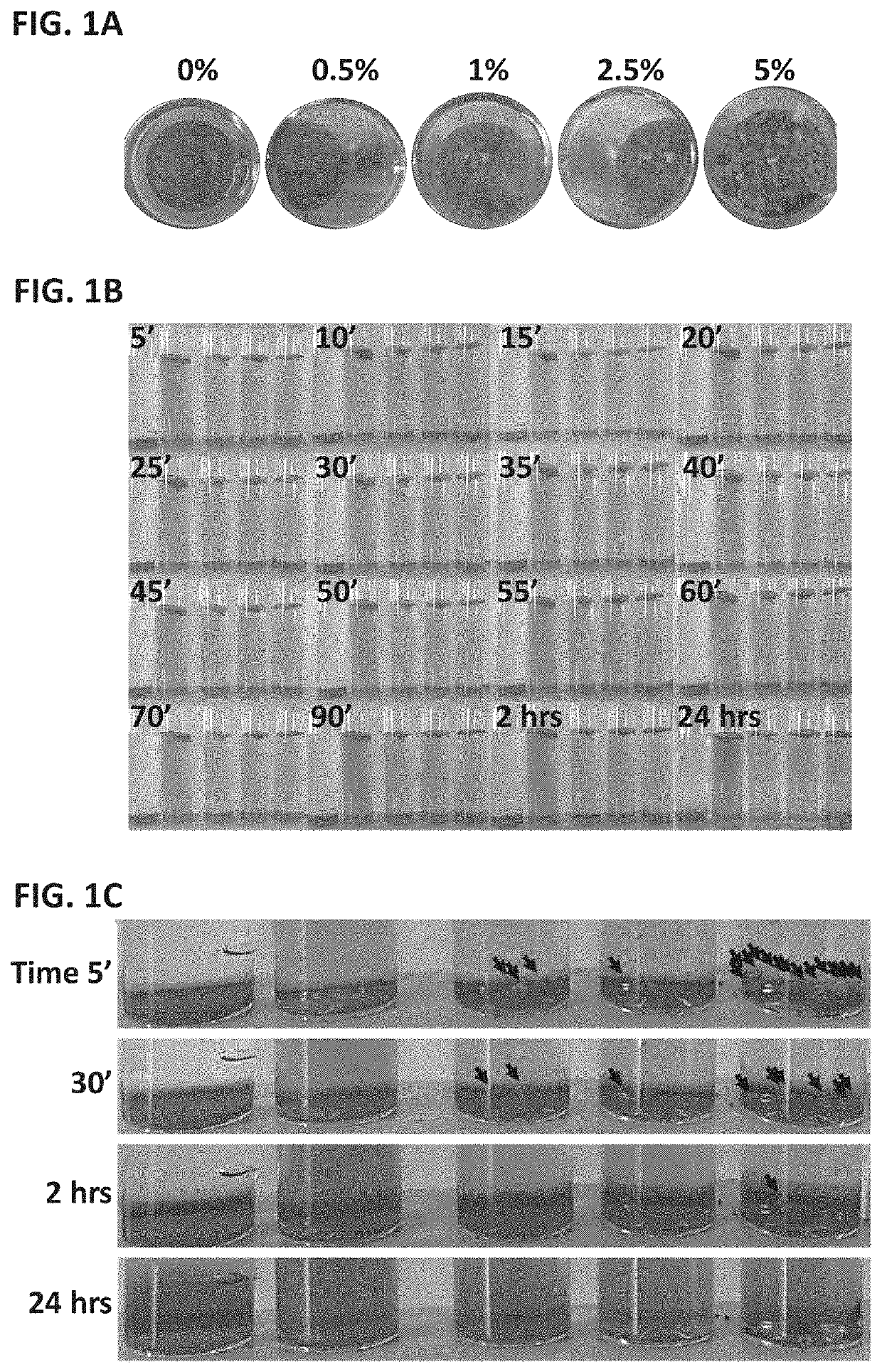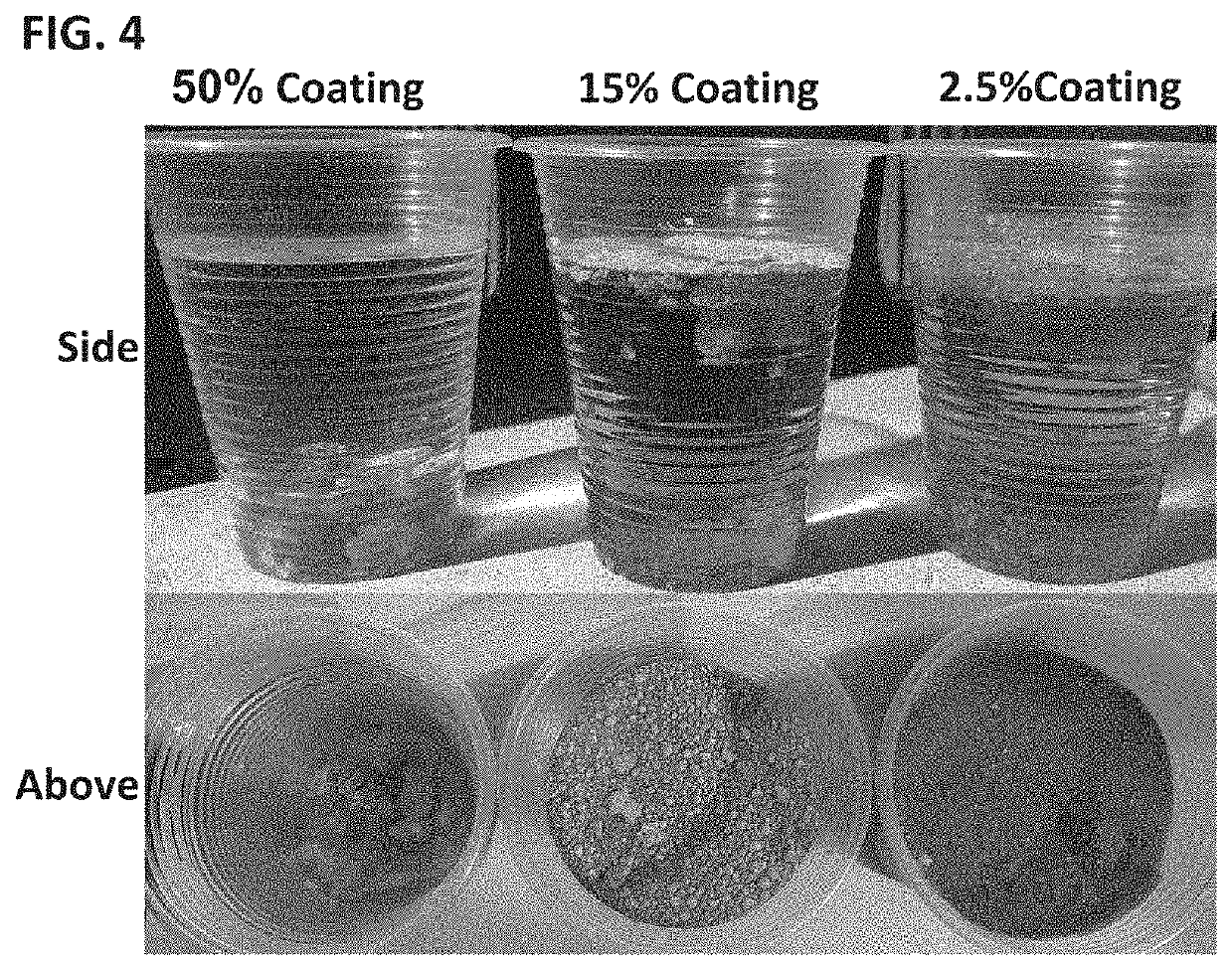Compositions for controlling phytoplankton contamination
- Summary
- Abstract
- Description
- Claims
- Application Information
AI Technical Summary
Benefits of technology
Problems solved by technology
Method used
Image
Examples
example 1
tion of the Optimal Coating
[0235]To determine the optimal percentage of coating required to provide (1) resurfacing of the composition and (2) slow-release of the compound, the following protocol was established.
[0236]A given quantity (in weight) of AI was mixed with the coating material (see Table 1). Although it could be expected that more coating would result in better buoyancy, in practice, the opposite happened. Within certain parameters, the less coating material applied, the better buoyancy was achieved. Concurrently, less coating translated into a higher rate of AI release from the composition.
TABLE 1compositions of copper and a mixture of fatty acidswith increasing percentage of the coating (granulesize distribution was between 0.3-1.67 mm).CuSO4•5H2O,mixture of fatty(% weight)acids (% weight)Notes99.50.5FIG. 1A-FIG. 1C99.01.097.52.595.05.090.010.085.015.080.020.075.025.0Slurry. big agglomerates upon70.030.0crystallization. Neither release60.040.0of copper nor resurfacing -...
example 2
on of Sodium Dichloroisocyanurate Buoyant Formulation with a High Concentration of Photosynthetic Microorganism Inhibitor
[0242]In order to test the buoyancy of the herein disclosed compositions, an experimental set-up, schematically illustrated in FIG. 2, was applied. In this set-up, a laboratory balance 1 (0-2,000±0.1 g) was positioned to measure the weight of a composition placed on a weighing-pan 5 immersed in a beaker filled with water 4. If the composition is non-buoyant (AI without the coating material) an increase in weight is anticipated (‘negative control’). Oppositely, if the composition is buoyant, the weight is expected to remain essentially unchanged.
[0243]The first composition tested was sodium dichloroisocyanurate (NADCC) 97% (w / w) encapsulated with wax (3%, w / w). The composition was prepared by melting 3 g of wax in a 500 ml beaker. When completely dissolved, the NADCC was placed inside the beaker and mixed vigorously for 20 min in a standard laboratory chemical fume...
example 3
l Preparation of Copper Sulfate Buoyant Formulation with High Concentrations of Photosynthetic Microorganism Inhibitor
[0247]A final weight of granular copper sulfate pentahydrate of 97.5 kg, with a granule distribution of 0.5-5.0 mm, was preheated to 50° C. in a ribbon mixer designed for powder blending. An amount of 2.5 kg pre-melted mixture of methyl esters of higher fatty acids (CAS No. 67254-79-9), at 70° C., was applied onto the blended mixture. The mixture was then blended for 20 min and the content's temperature then cooled to 22° C. (room temperature). For quality analysis, three samples of 100 grams each were withdrawn from different locations in the batch. The buoyancy of the samples was measured utilizing the experimental setup described in FIG. 2. Advantageously, the samples of the above described coated composition caused a 31%±4% weight increase only. In comparison, non-encapsulated copper showed a 50%±3% weigh increase. The critical surface tension of the composition ...
PUM
 Login to View More
Login to View More Abstract
Description
Claims
Application Information
 Login to View More
Login to View More - R&D
- Intellectual Property
- Life Sciences
- Materials
- Tech Scout
- Unparalleled Data Quality
- Higher Quality Content
- 60% Fewer Hallucinations
Browse by: Latest US Patents, China's latest patents, Technical Efficacy Thesaurus, Application Domain, Technology Topic, Popular Technical Reports.
© 2025 PatSnap. All rights reserved.Legal|Privacy policy|Modern Slavery Act Transparency Statement|Sitemap|About US| Contact US: help@patsnap.com



